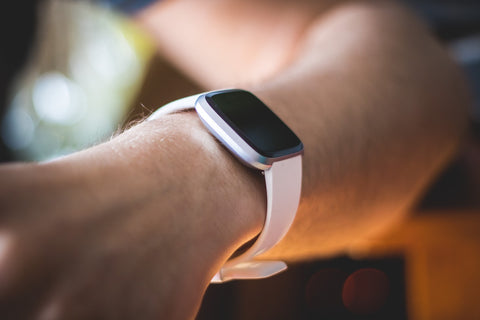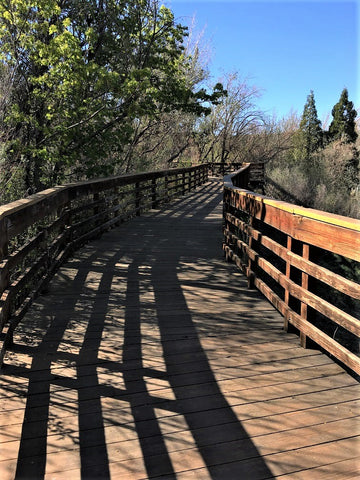How to Develop a Walking Lifestyle
How to Develop a Walking Lifestyle
For millennia, humans had to walk and exercise simply to survive. Whether it was getting water, cleaning the home, purchasing food, and simply the work they did, all involved body movement, and lots of it.
We now live in a car-dependent (and in some cities, public-transit-dependent) society. As our cities have grown out, and development changes have made for segregated zoning, it forces families to often use powered-transportation to get to their location.

Do we need groceries? Hop in the car.
Pick up the kids? Hop in the car.
Picking up the dry-cleaning. Eating out. Fast food drive-throughs. All of these need cars.
And even if you order online, or have delivery, or work from home, it just makes the problem worse, causing people to stay at home and not move as much as they are designed to.
In a post-COVID-19 world, drive-throughs, online shopping, and delivery for pretty much everything, is now the norm. We can literally sit in our home and have our “life delivered to us”.
We now have to make an effort. To go out of our way to exercise. Fitness and exercise must be scheduled. It won’t come naturally, in our modern societies.
Even in urbanized cities, like New York, where residents typically walk more, are facing these problems due to new technologies that allow some people to work from home.
Problems that develop from lack of walking
Americans especially, have an epidemic coming their way. Not that it is new. It has been brewing for the past 60 years, since World War 2. After families started moving out to the suburbs, and getting cars, rare health problems, like obesity, became a commonplace.
- High cholesterol
- Heart Problems
- Liver Problems
- Lung problems
All of these have connections with a lack of exercise. And while our modern hurried-diets, built on processed fast food are for much of the blame, our sedentary work life is also a major part of the cause.
Walking as a Starting Point

Of all the exercises and fitness options available, normal walking remains one of the best ways to stay fit and stay in shape. Not only is it easy to do, but if done right, is fun to do. And when you have a plan, daily walks over time will lead to a healthy lifestyle, that can improve blood flow, heart health, weight loss, and mood.
Crossfit, Yoga, Kickboxing, Tennis, Swimming. There are so many healthy activities out there. But we recommend starting with a daily walking routine. If you don’t do anything else, start with walking.
And when you plan your travel, plan it around walking, as the tool for sightseeing. It is the primary activity. It allows you to see the sights, and experience all that the senses provide.
The same can be said for your work life. Look for ways to park further away and walk to the clock-in. Make a habit of a 10-minute walk at breaks. Integrate walking into your job.
And while you can burn more short-term calories with other exercise programs, walking is the one activity that slowly, but surely, leads to long-term benefits; without having to go to a gym, or pay a fee.
Types of Walking
Nordic walking - Nordic walking uses trekking poles. Resembling cross-country skiing, or hiking, Nordic walking creates greater calorie burn, through the use of more upper-body muscle-movement. The sticks not only transfer weight to other parts of the body, reducing impact on the knees, but creates greater weight-burn through full movement.
Hiking – hiking is simply walking on varied-terrain on less-developed trails. The benefits of hiking over other forms of walking comes from differences in the trail on the feet, which leads the body to respond through muscle reflexes. It is like a car, that has automatic braking features. It takes energy to keep the muscles in this mode. In addition, hiking on inclines, lead to higher energy burn.
Power walking – powerwalking is simply walking fast, with a greater stride and longer arm swings, at a fast past. It literally requires more energy, in the same amount of time as regular walking.
Mixed fitness walking – whether it is skipping, varied pace steps, or intermixing walking with squats, stretches and other routines. It helps work muscles that are not used during normal walking.
Jogging – the benefits of jogging create the resistance, muscle movement and rigorous breathing to train for more strenuous activities. Being slower and more steady than running, jogging is lower impact. Yet much more energy use than standard walking.
Standard walking – finally, regular walking, which is about 2-3 mph speed, and normal pace, gives you the benefits of exercise, with less rigorous breathing and strain. This is the starting point we recommend for everyone, including women, and people of older age.
What is the Best Age for Walking
While metabolism and willingness to walk may be highest in ages of teens-20s, starting a walking plan may have the most benefits for people in their 50s and 60s. This is because, a plan develops the regimen. It gives you something to stick with. Perhaps you are in a “lazy mode” of living . . . eating, screentime, sedentary work, tired half-way through the day. Starting with the small steps of a gradually increasing walking plan, you can make a walking lifestyle achievable in older age. And with a plan, you are more likely to follow through. There are recorded stories of people in their 80s and 90s who walk daily, and swear it is the walking that gave them longevity.
Tools and Programs that Make Walking Better

While smartphone apps and fitness bands are the latest craze in fitness tools, more traditional items like good walking shoes, and even walking poles, are less work to track and maintain. Also, fitness videos, and stretching regimens may help for preparation, and making walking easy enough to start.
Weights, and specialty clothes can be useful for daily walking, however, be careful not to create too much “set-up” for walks, which can make it a burden, which can lead you to avoid going for a walk, when tempted.
Develop a Walking Plan
No Plan is a No Go.
If you want to benefit from walking, it should be regular, and somewhat consistent. This is where a walking plan comes into play.
First, pick a goal. Is it weight-loss? How many pounds.
Or, perhaps, it is metabolism. Daily calories burned. Or, maybe it is accomplishing a major hike or mountain to climb.
Either way, pick a goal and make it specific.
Then, craft a plan that starts small, and builds on itself. Below is a sample goal-oriented walking plan.
Date: July 1.
Goal: Hike to the top of Mt. Rose (a mountain near Lake Tahoe), by the summer of next year.
Starting plan: Mondays, Wednesdays, Fridays, hike the park trail, full loop. Tuesdays, Thursdays, walk around the block. Now through August 31.
Strength training plan. September 1-December 31. Saturday mornings, full hike up park hill. Full neighborhood walk each weekday morning. Evening stroll around the block after dinner.
Preparation plan: January 1-May 31. Same as Strength Training plan. Plus, 1st Sunday of each month, full-day hike, of my choice.
Notice, the “my choice” part of the final stage. Make if fun and enjoyable. If it is hiking, pick a hike you really want to do. If it is simply doing more walking, pick an enjoyable park or neighborhood to explore. This keeps the plan adjustable and give you ownership over it.
Getting Started
The hardest part is simply getting started. The goal may seem so far off. And if you have not had a regular walking regimen in a long time, it will be difficult to make it regular at first. See it as a window of ice. Break the ice. The first 2-3 weeks are critical. Once you have developed a regular schedule, and have been doing it for a while, the next plateau will be boredom, especially if you are not following a plan. Develop a plan, look at it periodically, and use the techniques in this article to add enough variety to your daily walks to keep pushing through these plateaus.
Walking with others
Walking in a group, or simply having a walking partner like your spouse or neighbor, keeps you accountable to continuing on a walking plan. It can also make it more fun, as you now have someone to talk and experience it with. Even a dog, or baby stroller, can make for fun and accompanied walks.
One partner is good for middle level walks. It gives you someone to chat and explore the path with. Groups of 3 or more are good for longer hikes up mountains, as you have multiple people to transition conversations with.
However, if you cannot connect with someone everytime, still keep up your walking.
Track goals
Weigh - Losing weight slowly is a more sure way of long-term weight loss, than fast crash diets. Walking gives you that slow, steady calorie burn, and leaves you with higher metabolism. 20lbs in a year is a more sure way to keep the fat off, than trying to rush it.
Blood Pressure – Based on recent doctor’s exam, maybe improving your blood pressure, through a combination of healthy diet (fiber, and the right kind of fats), along with a gradually increasing walking plan, can lead you into a healthy blood pressure range.
# of Steps in a Day – Many programs advocate for 10,000 steps a day. But for some, that is simply too much. Start with 5,000 a day, and add 1,000 daily steps each month.
Vertical gain – Elevation and climbing help build the heart rate, by creating climbing resistance with your leg muscles. This increases calorie burn. But a simple way to test that is to use a fitness band or app that tracks vertical elevation gain from your walking.
Distance walked – If 10,000 steps a day does not mean anything to you, consider miles (or km). 2 miles a day is a good start if you are not yet on a walking plan, but try to get to at least 5 miles a day.
Mountains or locations climbed – This is a clear goal, and fun to achieve. Maybe it is local mountain spots in your region. Or, maybe it is more prominent mountains nationwide. Either way, the big ones are best to set far off in the future (6-months-2 years). But build up with smaller mountains/trails.

In summary, there is no wrong age to start a walking plan. If you plan it, schedule it and kickstart it, you will reap the benefits of walking for years to come. It takes effort to develop healthy habits. And yet it is easy to develop bad habits. Making a goal, and a plan for walking, and sticking to it, will lead to health benefits that are achievable, together with a life-changing daily lifestyle.
------------------------
Mike Cutler is an avid hiker, and trail blogger. He lives with his family in Reno, Nevada, near California's Sierra Nevada mountains. He enjoys writing on the benefits of fitness for older generations, as well as world travel.
------------------------
Resources
https://www.hopkinsmedicine.org/health/conditions-and-diseases/risks-of-physical-inactivity
https://www.sciencedaily.com/releases/2011/05/110512082938.htm
https://www.health.harvard.edu/staying-healthy/exercise-and-aging-can-you-walk-away-from-father-time
90 year old says its the Walking lifestyle: https://www.youtube.com/watch?v=DRHORAlzRE0




Leave a comment
Please note, comments must be approved before they are published